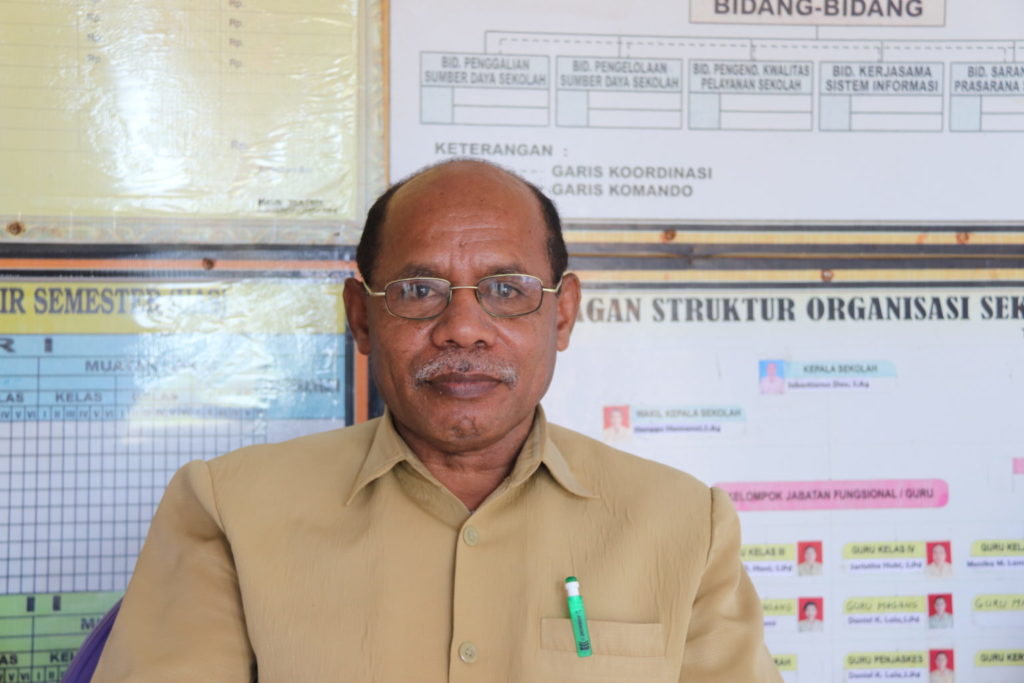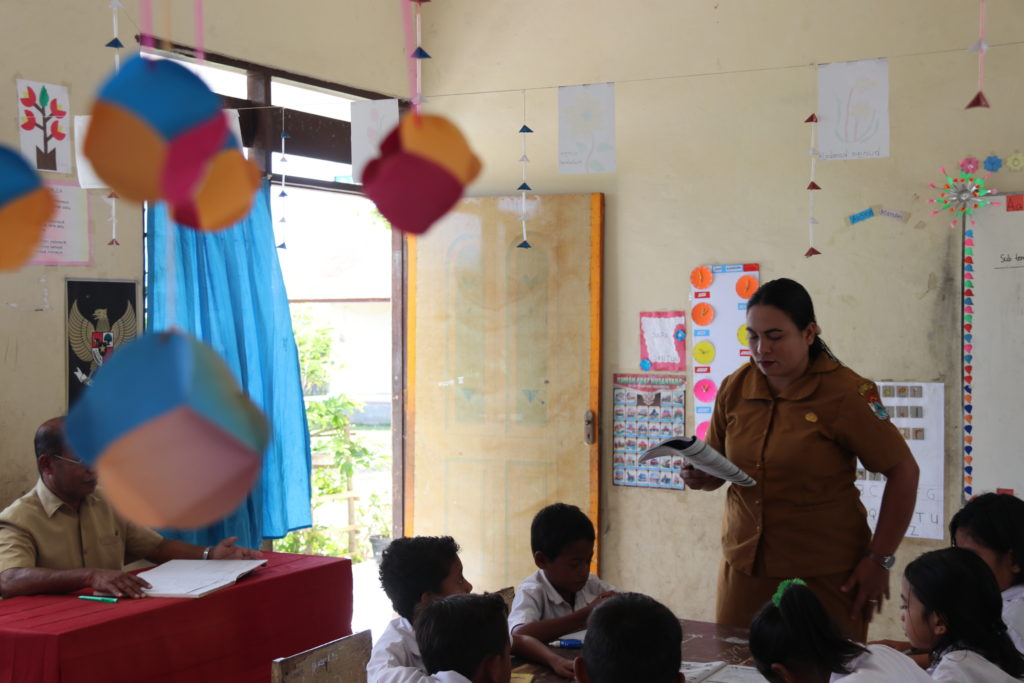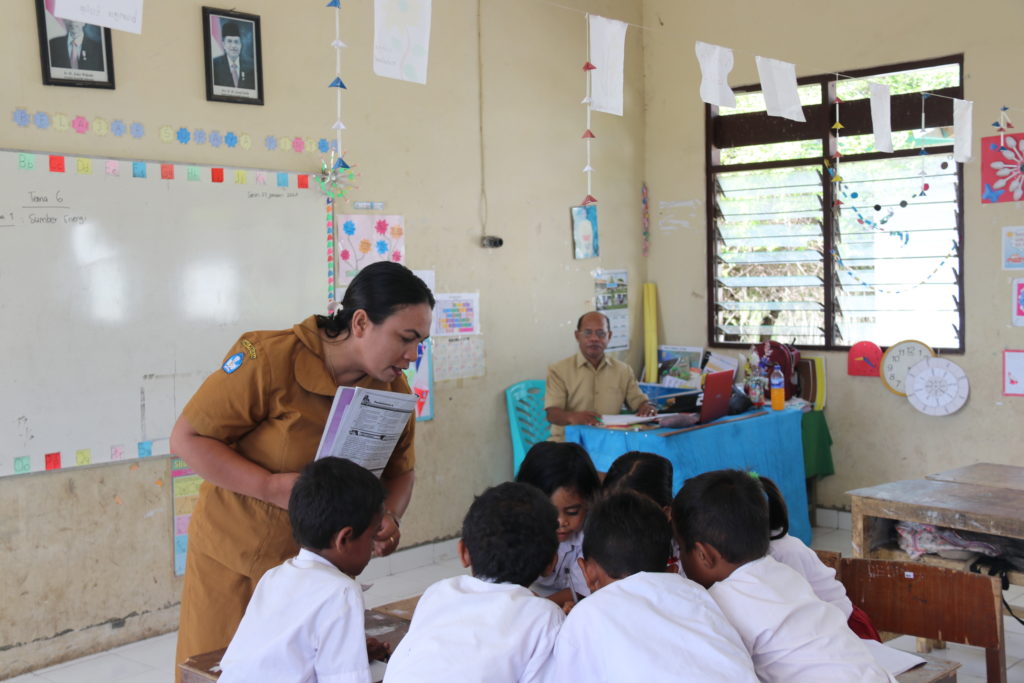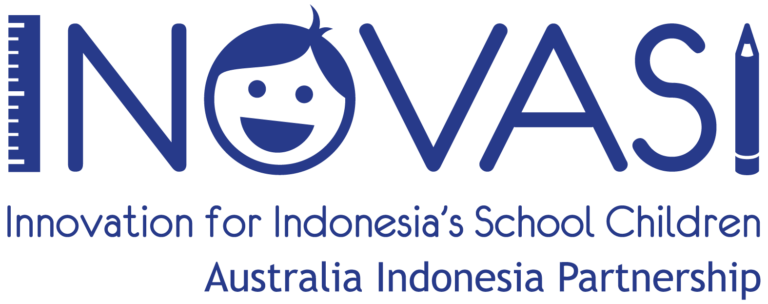
Sebastianus Dau walked into the classroom, took the reserved seat, and sat there for a while. He began to open a supervision book in which there were several items that a teacher must do while teaching. He would then write down a few things that he noticed that would be conveyed to the respective teacher.
The Principal of Wolihi Catholic Elementary School, who is usually called Sebas, did not have many notes because, according to him, what the teacher had done met the requirements that were in his material for supervision.
This was how Sebas conducted direct supervision before receiving training related to literacy improvement, becoming a regional facilitator (fasilitator daerah, or fasda), and his school becoming INOVASI’s partner. At that time, Sebas did not consider that learning methods, which were still teacher oriented, were a problem faced by teachers. Students tend to be more silent, listening, and paying attention to the teacher. As a result, the students’ ideas are not conveyed, and their competencies are not developed.
The same goes for bare classrooms that are devoid of any displays and media that support learning in the classrooms. There are no supporting books, such as storybooks. Even if there are storybooks in the library, they are not suitable for the students’ level, especially early graders. The storybooks are long, and the text size is small. The students’ abilities are not developed in this environment either.
There are, of course, some displays in the classroom, but they are only pictures that you would find in any classroom, such as the pictures of the president and vice president and pictures with religious nuances. There are no displays nor media that attract reading interest and improve students’ reading skills.
In accordance with existing regulations, school principals are required to complete direct supervision—supervision that is carried out with prior notification to the teacher—twice in a school year. Sebas admitted that those two occasions of supervision were not enough, so he would also conduct indirect supervision, in which he observed the teaching and learning processes from outside of the classroom and without prior notification to the teacher. Even so, that supervision was still focused on learning tools.
After receiving the first training of the Phase One Early Grade Literacy of the Teacher Working Group (Kelompok Kerja Guru, or KKG), Sebas began to understand how teachers should teach. He learned how teachers could create literate classes and learning media, and use those media effectively to help improve students’ literacy skills.

Even though he did not directly guide his school, his position as a regional facilitator and principal has made it easier for Sebas to supervise the implementation of the Early Grade Literacy program (Literasi Keas Awal) at his school.
Nowadays, Sebas’s supervision is no longer limited to learning tools but includes how teachers implement what they received during the INOVASI program training. To support this implementation, Sebas has even made changes to the School Revenue and Expenditure Budget Plan (RAPBS) for the procurement of materials for literacy classes and learning media.
Sebas has also made efforts to procure literacy support books. In addition to the tiered books from INOVASI, he has received a shipment of books from a friend. That shipment was a result of a Facebook status that he posted regarding the implementation of the INOVASI program at his school.

Sebas admitted that the Early Grade Literacy program helped him to understand the best classroom arrangement, the top teaching methods, and the appropriate use of learning media that meet the students’ needs. Thus, when he carries out supervision and budgeting, he pays attention to all of these aspects.
According to Sebastianus’s observations and supervision, the teachers who have received training, have practiced what they received during the training from the district facilitators. This can be proven from the learning results of grades. Teachers have also created and used learning media that meet the students’ reading needs/skills.
In the learning process, the teacher will only be a facilitator and will explore more of his/her students’ analytical skills with the help of learning media.
“This means that students are now more active compared to the teachers, as we expected—giving students the opportunity to be more active,” said Sebas.






